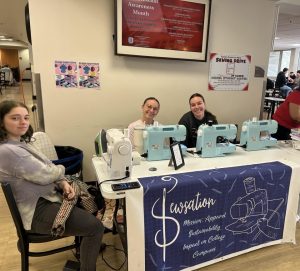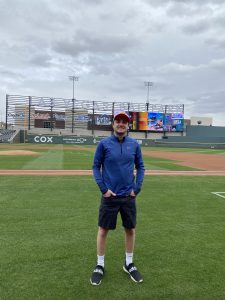Almost one year after the enactment of the Comprehensive Alcohol Action Plan, the university has proclaimed it a success.
The three ways the university has decided this is that it has been accepted and supported by the university and community, Late Night BU events have been highly attended and data shows there have been fewer drinking violations, Vice President for Student Affairs Alan Galsky said.
All aspects of the plan have been implemented except preparing a brochure for faculty about how to recognize when a student has a drinking problem, he said.
“I’m sure there are some students who are not happy about it,” Galsky said. “The only feedback I get is from the student leadership group and they’re fully supportive of this, as is the parents group.”
Although data for the spring semester won’t be compiled until the summer, there were 99 drinking tickets issued first semester, 13 less than the average of the previous three fall semesters.
There was only one student taken to the emergency room, whereas there were seven taken in fall 2007. Also, the average BAC level of students ticketed was .093, whereas the average from the previous three fall semesters was .113.
In addition to the information from this semester that will be studied in summer, sociology professor Lizabeth Crawford will be conducting an analysis on students’ drinking habits. The information will be taken from the American College Health Association National College Health Assessment, which all students were invited to participate in via e-mail.
This survey was chosen because it’s a well-established national survey and it was administered on campus in 2006. The university will make “tentative comparisons” to that year’s survey as well as the national results, Crawford said.
“It has a lot of questions about students’ drinking behaviors and it has a lot of questions about protective measures before they drink, such as establishing a designated driver,” she said. “We had a little more than 1,000 students participate, which we were a little disappointed in. But it should provide some good data.”
Fewer drinking violations and high attendance at Late Night BU are what Galsky said he calls the “visible success factors” of the Alcohol Plan.
“In terms of what we see with Late Night BU, it has been successful beyond our initial thoughts,” he said. “We were close to 900 students per function.”
On weekends there is not a Late Night BU, the university has also sponsored at least one late night activity without alcohol, including films, comedians and laser tag.
Factors’ influencing responsibility with alcohol that may be less visible are letters sent to off-campus residents about alcohol consumption and the online quiz students have to take to live off-campus beginning this year, Galsky said.
“Obviously we need a lot more data over the next two or three years,” he said. “But all of the early signs are very positive.”
In addition to what’s been implemented on campus, Executive Director of Student Development and Health Services Joyce Shotick has formed a community coalition, which involves 32 people from various aspects of the community, such as public safety officers, businessmen and students.
The coalition aims to educate community members about alcohol consumption, tobacco and opiates. Right now, it’s targeting to educate youth who haven’t begun drinking, especially at churches and youth groups, Shotick said.
“I’ve been overwhelmed by the community support and the development of a mission and vision statement,” she said.
The owner of Jimmy’s on Farmington Road is on the coalition. He is trying to survey students about the possibility of building a business alliance for establishments that sell alcohol that would educate servers and come up with common goals for checking IDs, Shotick said.
The group will also host a national speaker next year.




